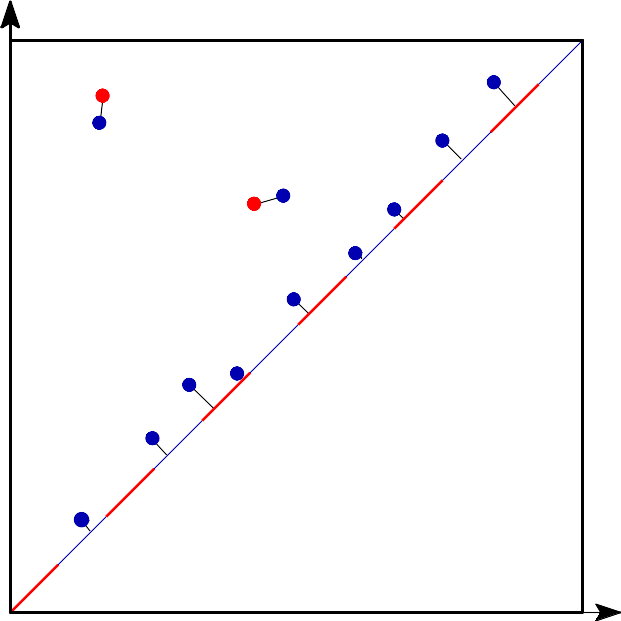Bottleneck distance user manual¶
Definition¶
|
|
|
||||||
|

Bottleneck distance is the length of the longest edge |
Bottleneck distance measures the similarity between two persistence diagrams. It’s the shortest distance b for which there exists a perfect matching between the points of the two diagrams (+ all the diagonal points) such that any couple of matched points are at distance at most b. |
| Bottleneck distance user manual |
Function¶
-
gudhi.bottleneck_distance()¶ This function returns the point corresponding to a given vertex.
Parameters: - diagram_1 (vector[pair[double, double]]) – The first diagram.
- diagram_2 (vector[pair[double, double]]) – The second diagram.
- e (float) –
If e is 0, this uses an expensive algorithm to compute the exact distance. If e is not 0, it asks for an additive e-approximation, and currently also allows a small multiplicative error (the last 2 or 3 bits of the mantissa may be wrong). This version of the algorithm takes advantage of the limited precision of double and is usually a lot faster to compute, whatever the value of e.
Thus, by default, e is the smallest positive double.
Return type: float
Returns: the bottleneck distance.
Basic example¶
This example computes the bottleneck distance from 2 persistence diagrams:
import gudhi
diag1 = [[2.7, 3.7],[9.6, 14.],[34.2, 34.974], [3.,float('Inf')]]
diag2 = [[2.8, 4.45],[9.5, 14.1],[3.2,float('Inf')]]
message = "Bottleneck distance approximation=" + '%.2f' % gudhi.bottleneck_distance(diag1, diag2, 0.1)
print(message)
message = "Bottleneck distance value=" + '%.2f' % gudhi.bottleneck_distance(diag1, diag2)
print(message)
The output is:
Bottleneck distance approximation=0.81
Bottleneck distance value=0.75